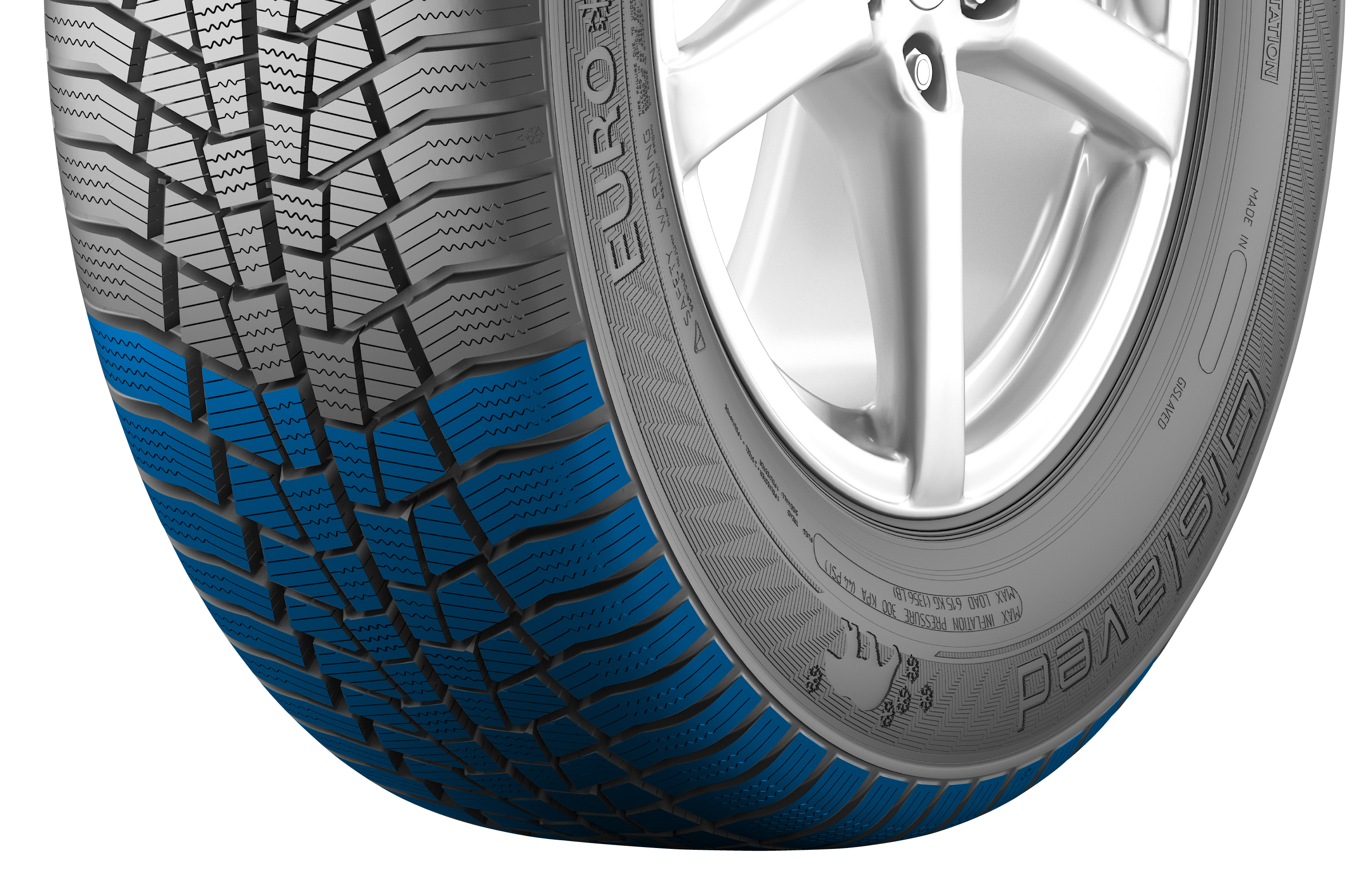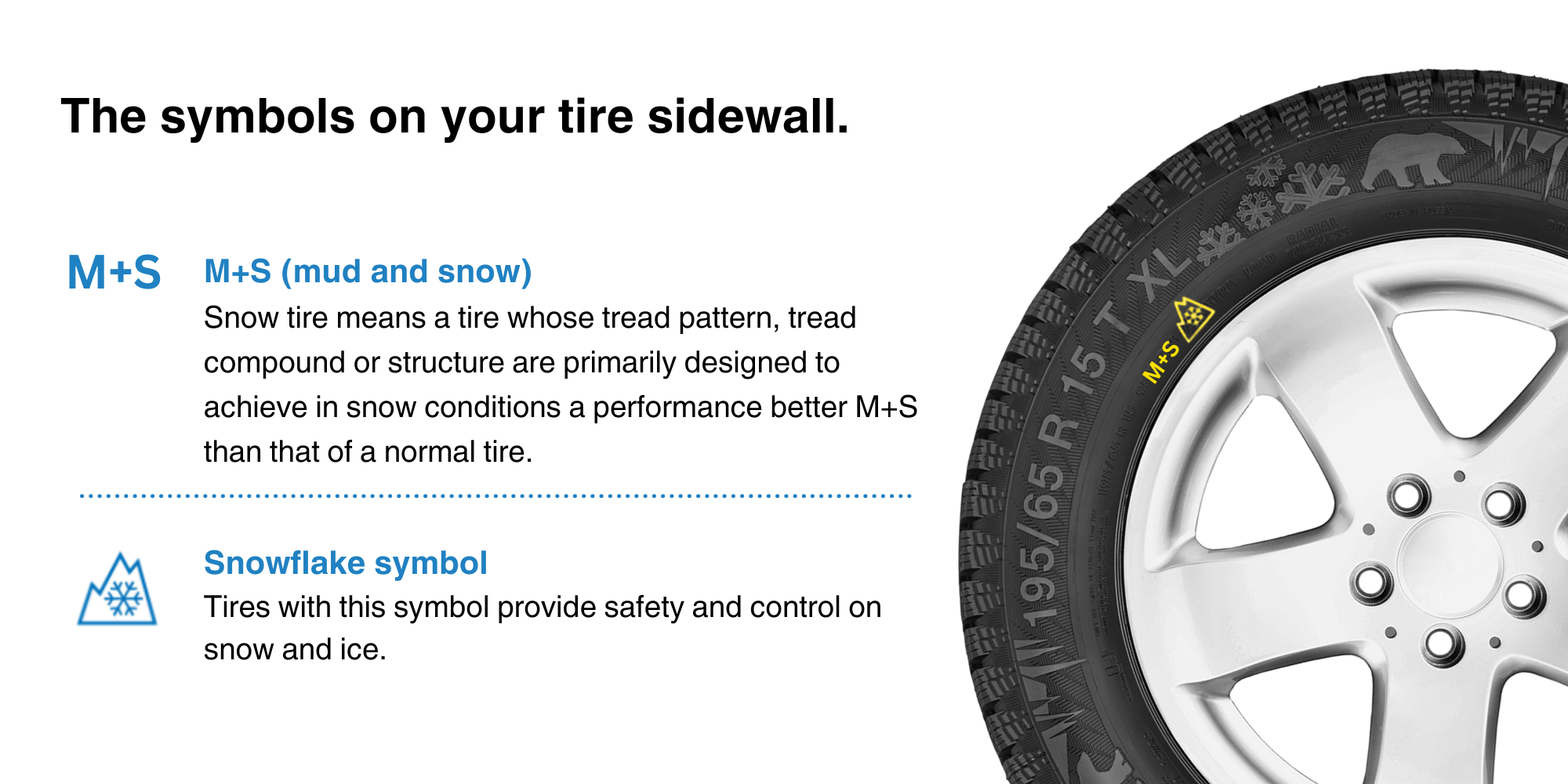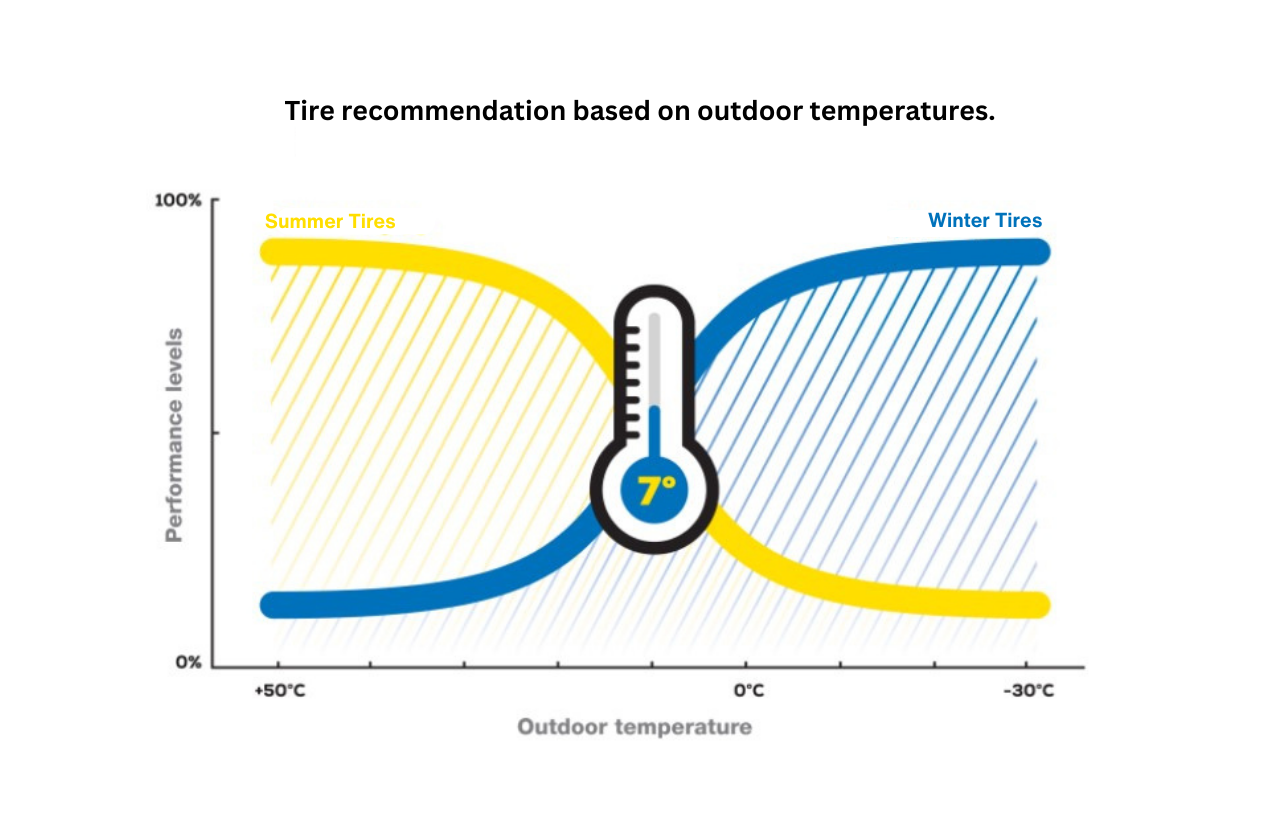Winter weather, snow, and ice can come suddenly as an unwelcome surprise. For challenging weather conditions, you need proper winter tires. But what are winter tires? And why do they perform so well in wintry conditions?
How do winter tires actually work?
Our tire engineers have spent years determining how different pattern designs give drivers maximum safety in cold temperatures and on ice and snow. Many drivers rely on winter tires, but how do they help you stay safe on the road?
Winter tires deliver additional grip, increased traction, shorter stopping distances, and better grip when cornering – providing an all-around safer driving experience in demanding wintry conditions.

Their softer compound, deeper grooves and narrow tread sipes help to disperse road surface water, slush and snow.
Why are winter tire tread depths deeper? Because this allows snow and slush to build up in cavities. This sounds counter-intuitive, but snow is good at gripping onto snow, so these deep tread depths boost tire traction.
What are the advantages and disadvantages of winter tires?
Pros
- Significantly improved grip
- Better and safer handling
- Shorter braking distances
Cons
- Lower performance above 7ᵒC
- Storage costs
- re-fitting costs
In short, the key differences between winter and summer tires are structure, compound, and tread:
Winter tires
Higher natural rubber content makes them softer, improving grip and enhancing handling performance below +7ᵒC.
Various tiny grooves (sipes) in tread patterns disperse water and prevent aquaplaning – providing optimal grip on snow, slush and ice.
Deep tread pattern with cavities for snow – which grips and compacts snow for increased grip and traction on snowy and icy roads.

Summer tires
Relatively hard compound softens in milder temperatures (above +7ᵒC) for better all-around performance in dry and wet conditions – lower friction and better fuel efficiency.
Fewer sipes and special tread bars to minimize aquaplaning - provide more grip in warm temperatures.
A block-shaped tread pattern causes a large road footprint, ensuring excellent handling and outstanding breaking.
How to identify winter tires?
Winter tires are clearly identifiable: the tire wall features two symbols - the letters M+S accompanied by a snowflake/mountain logo. M+S indicates that the tire has great handling in muddy and snowy conditions. You’ll also see this symbol on all-season tires. The three-peak mountain and snowflake, known as 3PMSF, only appears on winter tires. It means that the tire has attained the minimum required performance on snow.

Should I buy winter tires?
In short – yes. The benefits far outweigh the minor inconvenience of changing tires. If you face wintry conditions in your region, it is recommended – and in some countries even compulsory – to have winter tires to handle different wintry conditions and driving surfaces.
Much more than just snow and ice
Winter tires perform best at 7ᵒC and below, so they’re suitable for much more than snow and ice conditions. Why? Because winter tires have a different (softer) rubber compound than standard summer tires, they don't harden in lower temperatures and have better grip.
Braking distances
With winter tires, braking distances are shorter in colder temperatures (7ᵒC and below). You’ll stop sooner on wet and icy roads. And stopping distances are vital - every metre makes a difference.
A better drive
Cold weather? Your vehicle will perform better on winter tires. Their tread pattern, block edges, sipes, and rubber compound increase traction and braking performance on cold surfaces. And more edges mean better cornering and lane changing at higher speeds – increasing your driving safety and comfort, whatever the weather.
Save money on fuel
Use winter tires when the temperature hits 7ᵒC and below, and you’ll cut fuel costs, too. The tires’ structure means a better transfer of lateral forces when steering and flexible sidewall means less energy is lost when absorbing the impact with the road. So, in colder conditions, there’s better-rolling resistance for more kilometres to the litre.
Simply safer
Drivers are several times more likely to have an accident in the winter than in summer – and the statistics prove it. You can significantly lessen the risk of becoming another negative statistic by fitting winter tires – simply safer.
When should I change to winter tires?
- Shorter days and worsening weather mean it's high time to get the low-down on the best winter tire models.
- Knowing when to change to winter tires will ensure your driving is safer and save you fuel costs. Change tires too early or too late, and your car won’t be properly prepared for the driving conditions ahead.
- Buy your new winter tires at the end of summer and have them fitted as soon as possible.
- This saves you storage costs, and a sudden drop in temperature won’t catch you off guard.
- +7°C is the agreed cut-off point – so buy your new tires or retrieve them from storage before the temperature drops in autumn, and likewise, change back to summer tires when the temperature recovers in the spring.
- A good quality set of winter tires should last 10 years when switching every six months.
- In some countries, fitting separate summer and winter tires is compulsory.

What should I pay attention to before fitting winter tires?
Before you have winter tires fitted, you should take note of the quality of the tires. Specifically, you should pay special attention to the tread depth. While the legal minimum depth is 1.6 mm, we recommend ensuring winter tires have 4 mm or more. This helps ensure some of the most vital properties, such as grip, braking distances and protection from aquaplaning.
Similarly, you should also check that neither the treads nor sidewalls are not cracked or damaged. Any damage here can worsen on the roads, so don’t fit weakened or damaged tires to your car.
Likewise, if you store tires in a garage, you should also have them balanced. If they are not balanced correctly, this could negatively influence the car’s suspension system, which could result in sideways movements, as well as causing uneven wear across the tire set.
Finally, when it comes to these checks, check the tire pressure. Tires can lose pressure naturally, so they will not be at the same level as last year. Of course, adjusting the pressure here will also highlight any leaks that might have gone unnoticed.

For drivers living in mild winter conditions (temperatures rarely drop below freezing), all-season tires can be an alternative. Our all-season tires have the same M+S and the three-peak mountain snowflake symbol as winter tires. This means they can also be used in countries where winter tires are required by law. Please check your local legislation for more information.
Please consider that summer and winter tires are more specialized towards the respective conditions.
If unsure about the right tire choice, please get in touch with your local dealer for personal advice.